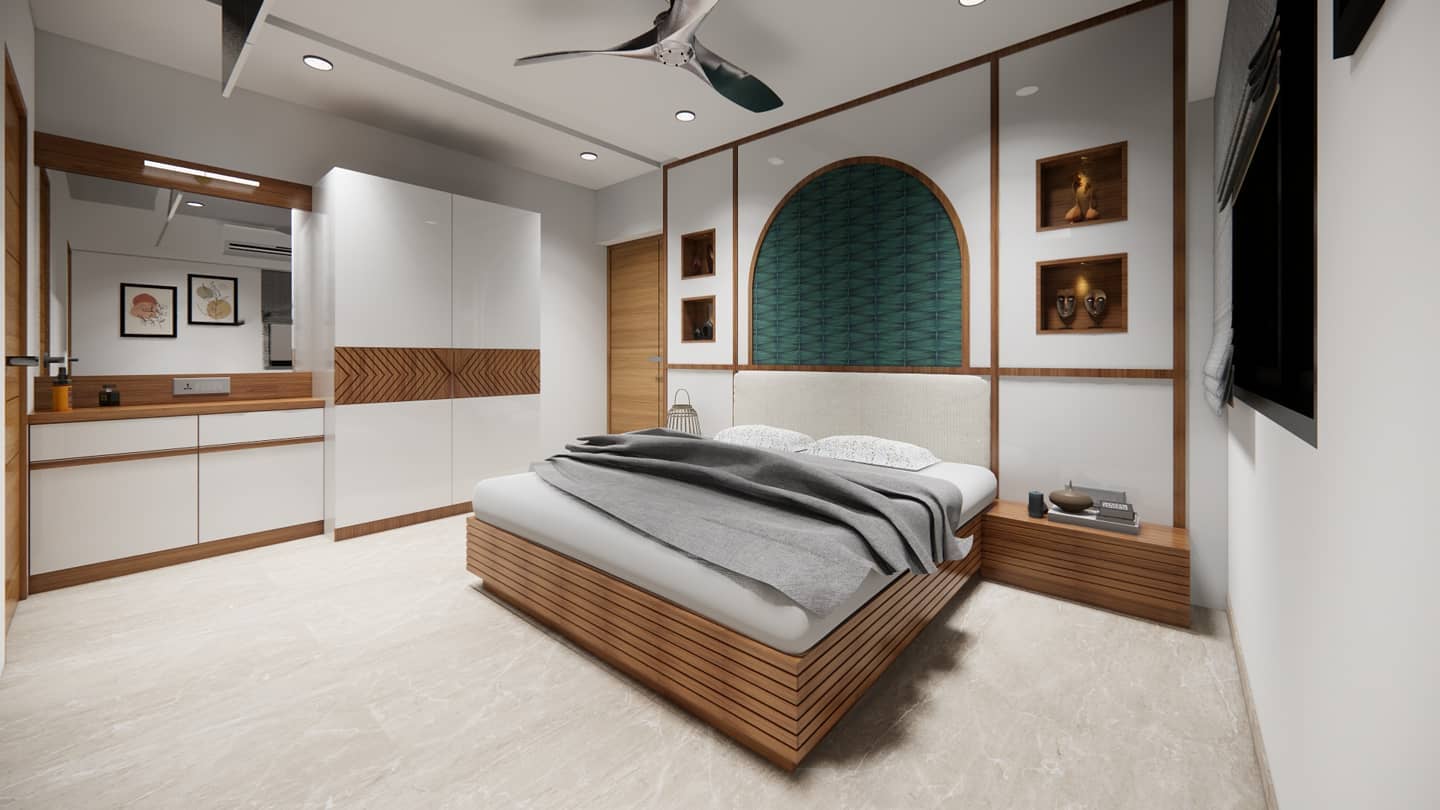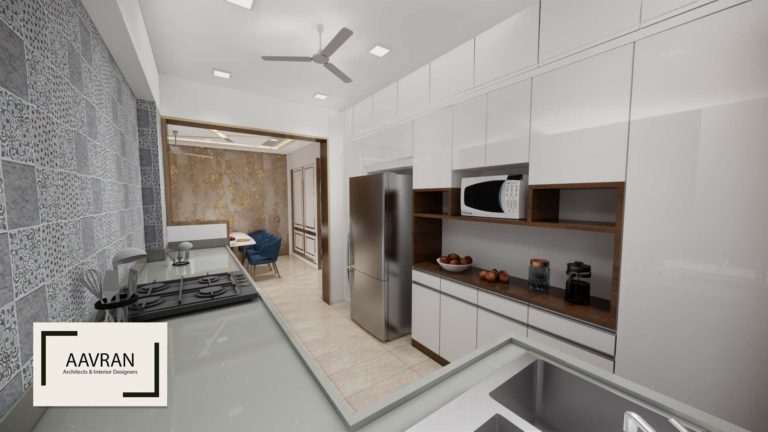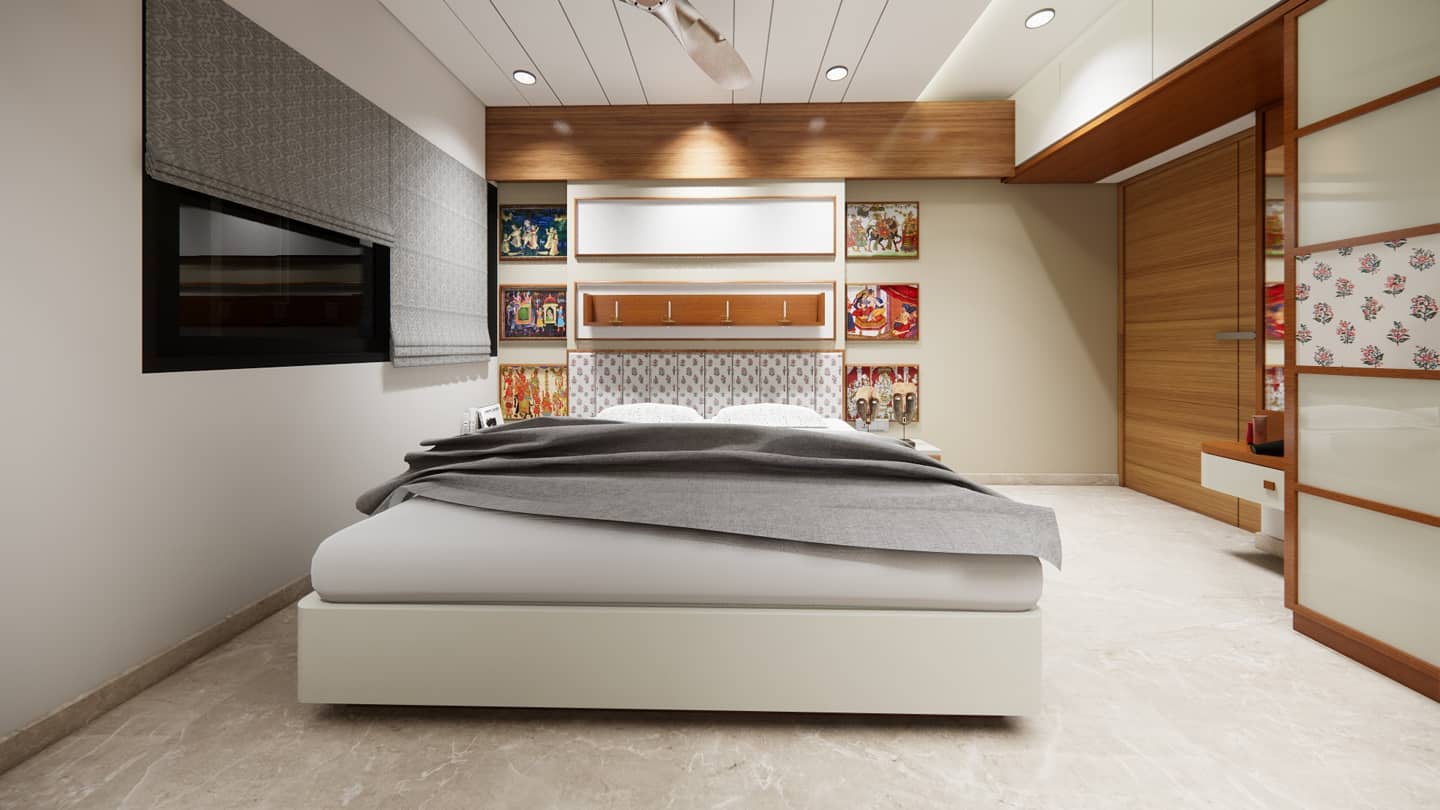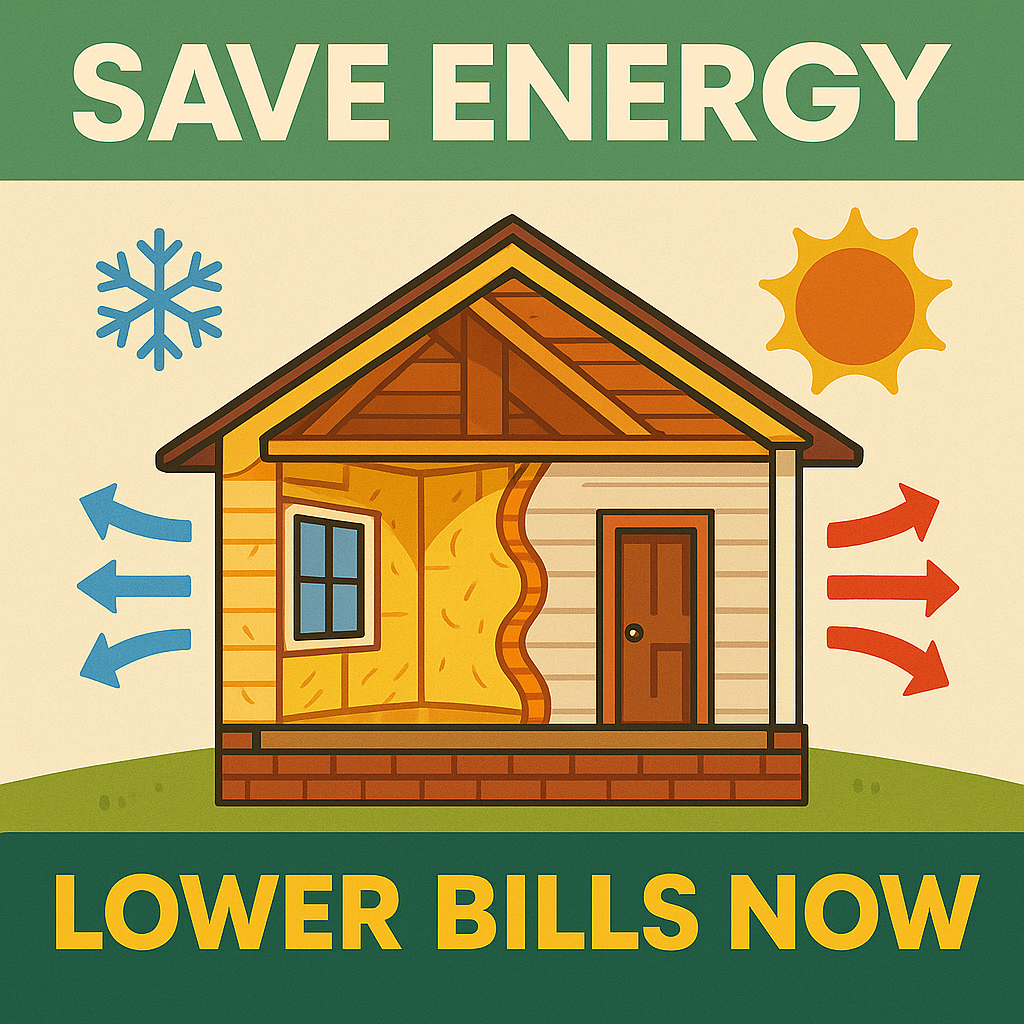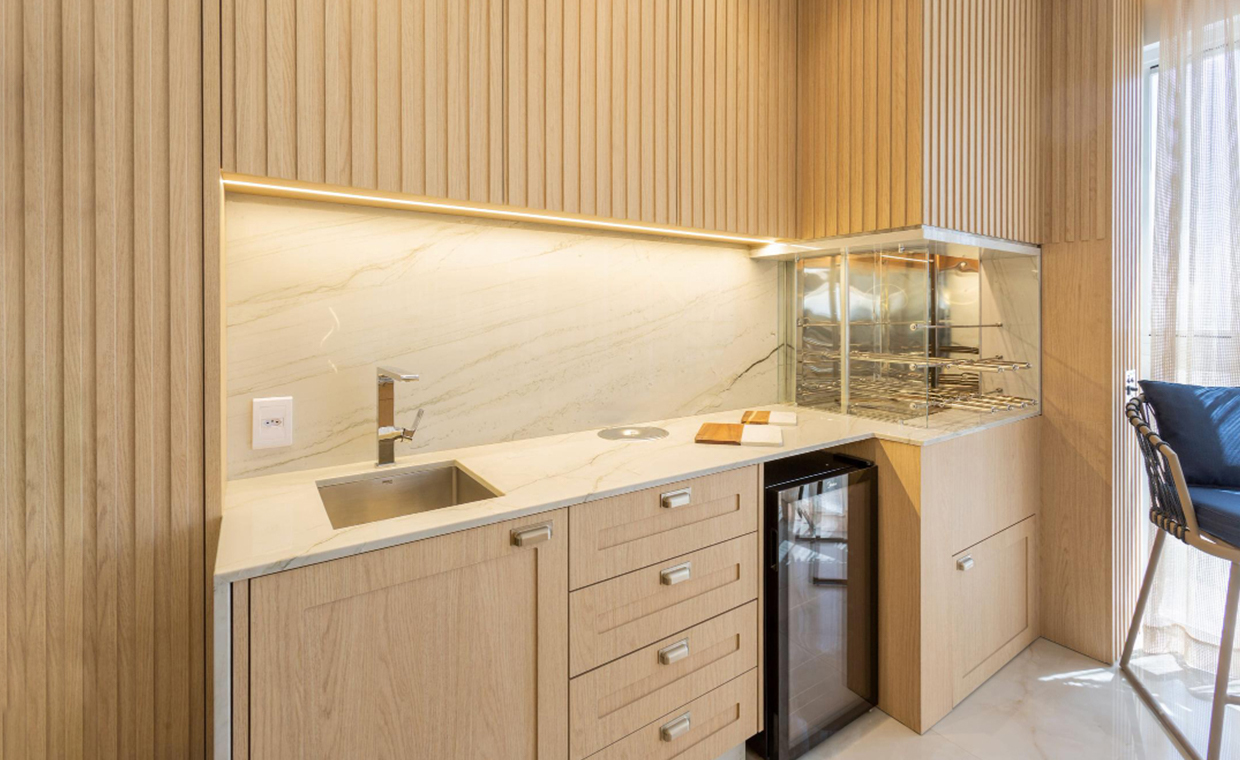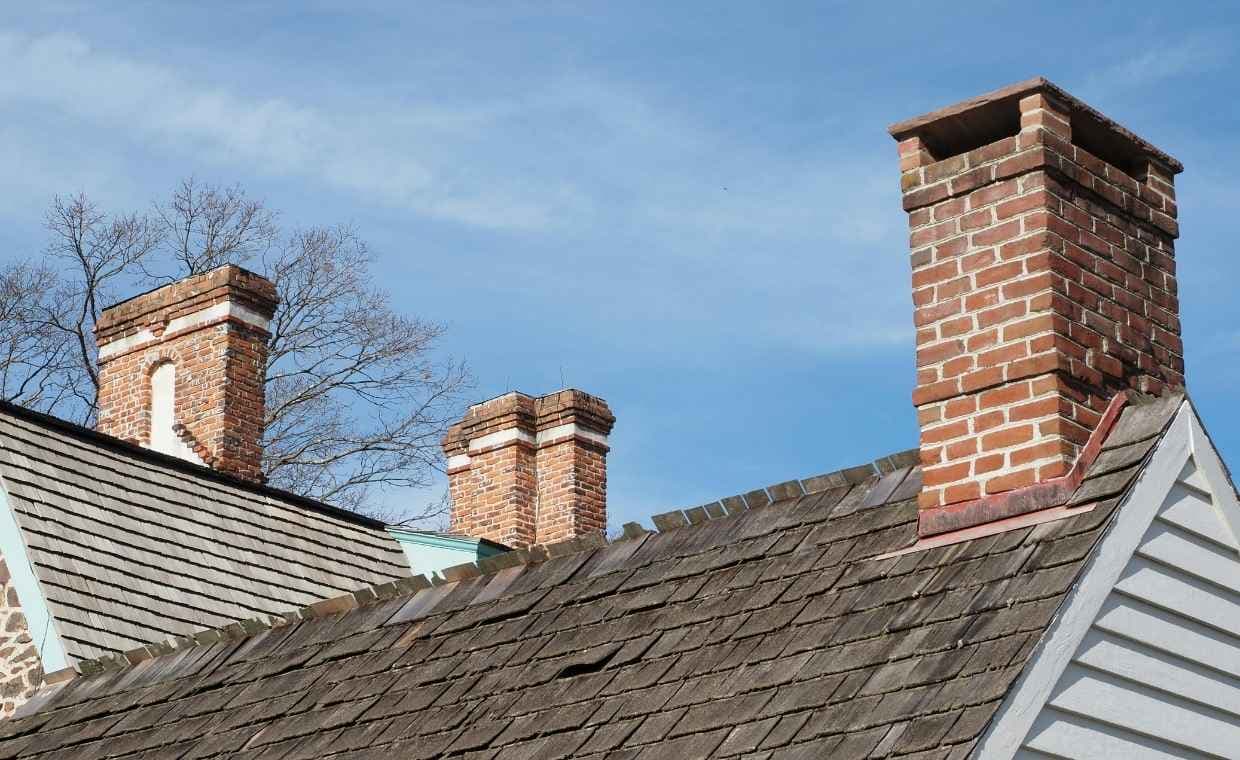
Table of Contents
The world today is shifting towards sustainable and renewable energy sources, with solar energy leading the way. Continuous efforts and innovations are being made to harness solar power efficiently. One such groundbreaking invention is the solar chimney. It works on the principle of a passive ventilation system. A passive ventilation system is a non-resisting climate management design that uses natural heating, cooling, and ventilation to create a comfortable environment inside buildings. (An active ventilation system relies on mechanical and electrical devices like fans, air conditioners, heaters, etc., to maintain the temperature and airflow.)
Also Read: These Innovative Air Conditioners Will Help You Save Money!
In this blog, Gharpedia explains everything you need to know about solar chimneys- how they work and why they are revolutionising modern, energy-efficient architecture.
What is a solar chimney?

A solar chimney, also known as a thermal chimney, is a passive ventilation system that uses solar energy to maintain natural airflow inside a building. In other words, a solar chimney uses solar radiation, cool night air, and air pressure differences to maintain a comfortable interior climate.
Solar chimneys are tall, wide structures built to face the sun. Their surfaces are typically coated in dark, matte materials that absorb solar radiation and heat the chimney, which in turn heats the air inside. Hot air is lighter and tends to rise. As it rises, it exits through the top of the chimney. Simultaneously, cooler air is drawn in at the bottom, which then heats up and follows the same upward path. This process is known as convection, and it is especially useful in buildings where cross ventilation or stack ventilation is insufficient.
Also Read: What is Stack Effect?
Solar chimneys are especially effective in humid and hot climates. They are most efficient when they are tall and wide, but not too deep, as this maximises the surface area for both solar absorption and contact with the internal airflow.
Variations in solar chimney design include utilising multiple chambers to further increase surface area and the use of materials such as metals with high thermal conductivity to enhance heat absorption. Similar to the design of Trombe walls, features like low-emissivity coatings and glazing can be added to reduce heat loss.
The chimney must be thermally insulated from the rest of the building to prevent unwanted heat gain in occupied spaces. In cooler conditions, the chimney can be sealed at the top to redirect absorbed heat back into the building. The size of a thermal chimney significantly affects its effectiveness; the larger it is, the better its performance. Ideally, a solar chimney should be placed on the south-facing wall if the building is located in the northern hemisphere.
The design of a solar chimney should be carefully planned, and the construction materials should be selected to maximise heat absorption and minimise reflectivity.
Principle of the Solar Chimney and How Does it Work?

The working principle of a solar chimney is based on the stack effect ventilation. When sunlight heats the air inside the chimney, it gets lighter, making it rise upwards and exit from the chimney. This creates a pressure difference at the bottom of the chimney which sucks fresh and cool air into the building. This natural process (passive process) reduces heat and provides ventilation. The natural ventilation system is created in the whole building by the coming of cold air from below in the chimney and the outgoing of the hot air from its top.
As part of sustainable building design, a solar chimney utilises solar radiation or heat energy to heat air through the greenhouse effect. Whether placed outdoors or indoors, a solar chimney is a non-resistance outdoor ventilation system that does require mechanical components (fan, air conditioner, cooler, heater, etc.). These chimneys reduce unwanted heat during the day by using the convective cooling principle, replacing internal warm air with external cool air.
Chimneys with black, hollow thermal masses have an opening at the top that allows hot air to escape. The top of the chimney is where the air from the room exits.
It is also possible to reverse the process to heat the room by sealing the top of the chimney, preventing the warm air from escaping. The warm air circulates back into the room, keeping the space warm and cozy.
The effectiveness of a solar chimney largely depends on its placement within the building structure. It should be located in an area that receives maximum sunlight, particularly the afternoon sun, which provides the most intense heat energy.
Importance of Solar Chimney
A solar chimney is a renewable energy system used to enhance natural ventilation in buildings by harnessing solar and wind energy. It is one of the most effective solar-assisted passive ventilation systems integrated into the building envelope. It performs exceptionally well in enhancing the natural ventilation system and improving thermal comfort in certain climatic conditions.
Additionally, it helps reduce electricity bills and is a permanent, low-maintenance solution.
Application of Solar Chimneys
The ventilation enhancement of solar chimneys has been extensively studied through both numerical simulations and experimental research. The evaluation of these systems depends heavily on environmental conditions and performance prediction methods. With the increasing scale and complexity of modern buildings, a unified design strategy and clear implementation guidelines for solar chimneys are still lacking. Meanwhile, the integration of solar chimneys with other passive ventilation systems has garnered significant interest.
These hybrid systems extend the service life of an independent system and strengthen ventilation capacity for indoor cooling and heating. It has residential, commercial and industrial applications.
However, progress in expanding the use of solar chimneys in large-volume and multi-story buildings remains slow. In addition, conflicting research findings appear due to the inherent complexity of the system.
Which Materials are Used in Solar Chimneys?
The materials used in a solar chimney should be carefully selected because they affect the effectiveness of the structure. Opt for a construction material that absorbs the maximum amount of solar energy. Some of the high heat-absorbing materials are:
- Tinted glass
- Insulated glazing
- Brick
- Metals
Efficiency of Solar Chimneys
The efficiency of a solar chimney depends on multiple factors, including design, materials, climatic conditions, and proper implementation. Keep the following points in mind:
- The construction material of the solar chimney should have high thermal mass to absorb and retain heat efficiently. Suitable materials include black-painted metal, concrete, brick, or glass. The darker the surface, the greater the heat absorption.
- Position the solar chimney in a location that receives direct sunlight for most of the day.
- Proper insulation is essential to prevent heat loss and maintain high air temperatures inside the chimney.
- Taller chimneys create greater pressure differences, enhancing ventilation.
Pros and Cons of Solar Chimneys
Pros:
- The collector can use all solar radiation, both direct and diffused. This is crucial for tropical countries, where the sky is frequently overcast. It works effectively in all weather conditions.
- Due to the heat storage system, the solar chimney will operate 24 hours on solar energy. The water tubes under the glass roof absorb part of the radiated energy during the day and release it into the collector at night. As a result, solar chimneys produce electricity at night as well.
- Solar chimneys are permanent structures with minimal moving parts, which contributes to their low maintenance requirements.
- The building materials for solar chimneys are mainly concrete and glass, which are easily available everywhere and in sufficient quantities.
- Solar chimneys are easy to construct and do not require a high-tech manufacturing plant.
- They provide an energy-efficient ventilation system.
Cons:
- High initial investment cost.
- Recommended for new houses which have excellent insulation and air-tightness.
- Space requirement is the major obstruction.
- Skilled manpower is required for the proper design and installation of the system.
Conclusion
Should you install a solar chimney? Absolutely! Whether you are looking to cut down cooling costs, improve indoor air quality, or design a more sustainable building, a solar chimney is a smart, long-term investment. It is a one-time investment with lifelong returns.
Also Read:
8 Eco Friendly Building Materials Utilised in Green/Sustainable Buildings!
Tips to Ensure the Good Ventilation in Home!
Solar Chimney FAQs
01. Are Solar Chimneys Effective?
Yes! Solar chimneys are an effective solution for indoor air ventilation. In fact, they work well in all weather conditions and can absorb both direct and diffused solar radiation.
02. How Does a Solar Chimney Work?
A solar chimney works on the principle of stack effect ventilation. The chimney receives heat from the sun and heats the air in it. The hot air rises and exits from the top. This creates a void at the bottom, which is filled in by the cold air. This way, airflow is maintained naturally. Additionally, during the winter season, you can close the top of the chimney to retain hot air, helping keep the indoors cozy.
03. Where Can I Install a Solar Chimney?
A solar chimney should be installed on a south-facing wall (in the Northern Hemisphere) which receives direct sunlight for most of the day. Proper height and orientation enhance airflow.
04. Can a Solar Chimney Work at Night?
Yes, a solar chimney can work at night by utilizing the heat stored during the daytime. Although its efficiency is lower than during the day, it still supports nighttime ventilation.
05. What Materials Are Used to Build a Solar Chimney?
Commonly used materials include black-painted metal, concrete, brick, and dark-coloured glass, all of which are excellent at absorbing and retaining solar heat efficiently.
06. What Should be the Height of a Solar Chimney?
The taller the chimney, the stronger the airflow. A general recommendation is a height of 3 to 4 metres, which typically provides optimal efficiency by creating a greater temperature difference.
07. What are the Benefits of a Solar Chimney?
- Maintains indoor temperature
- Eco-friendly
- Lower energy consumption
- Energy-efficient ventilation
Author Bio
Bhamini Gamit – I’m Bhamini Gamit. I had completed my graduation in 2019 from S.N.P.I.T & R C, Umrakh, Surat, Gujarat. My core interest is to write blogs on civil engineering of various subjects like geotechnical, Building materials, Building construction, and Reinforcement cement concrete. For the last 6 months, I have been a guest writer on Gharpedia. You can easily find me on Instagram & LinkedIn.






